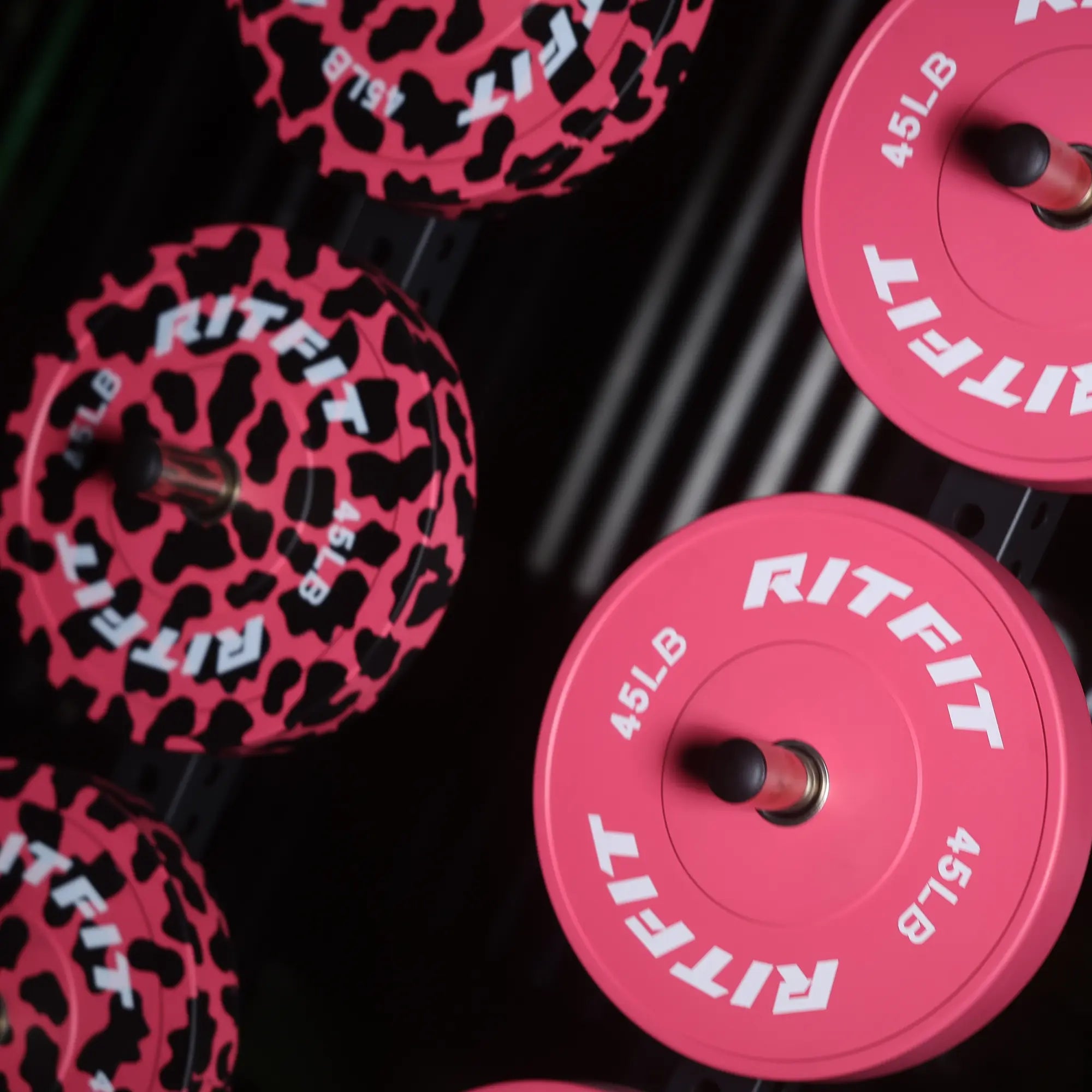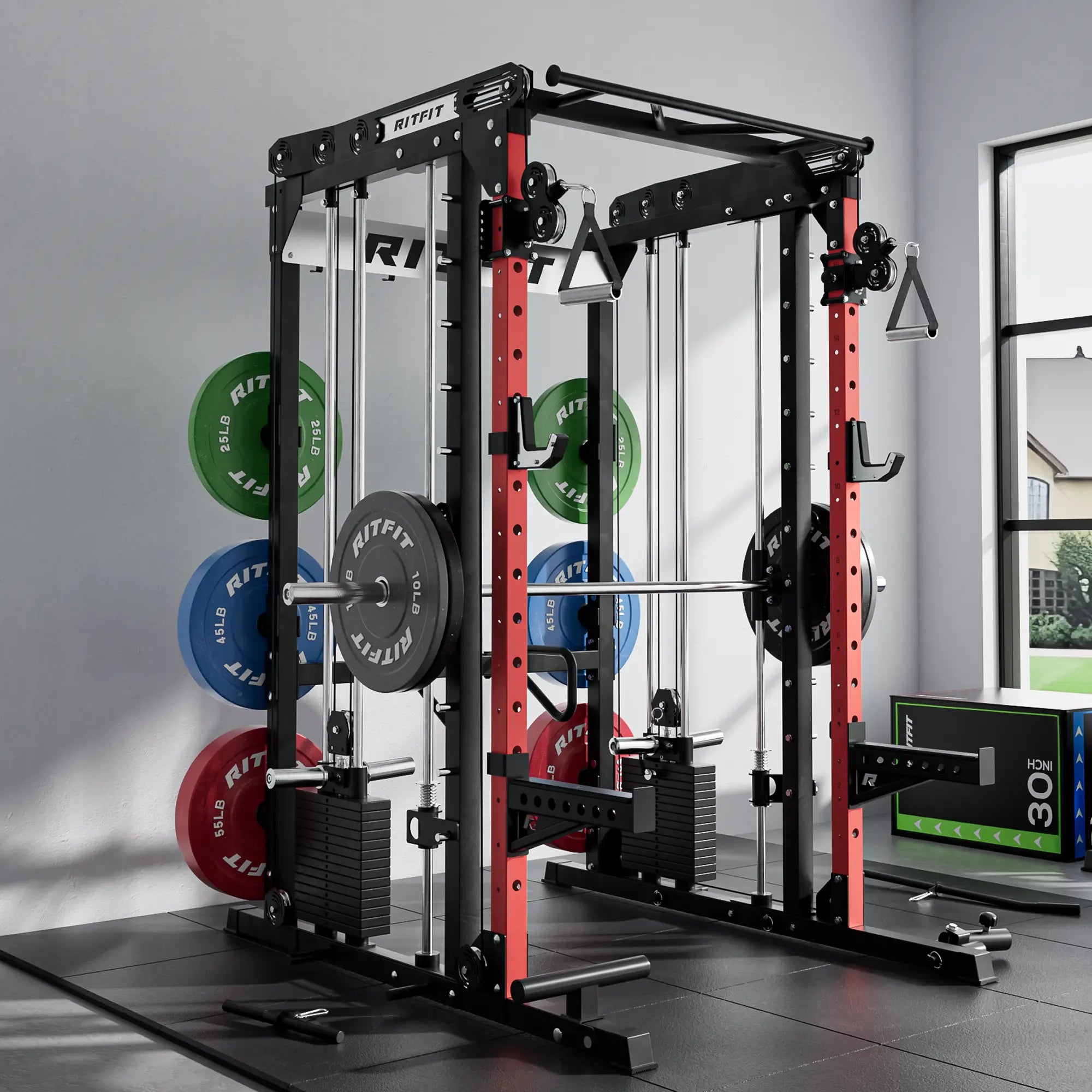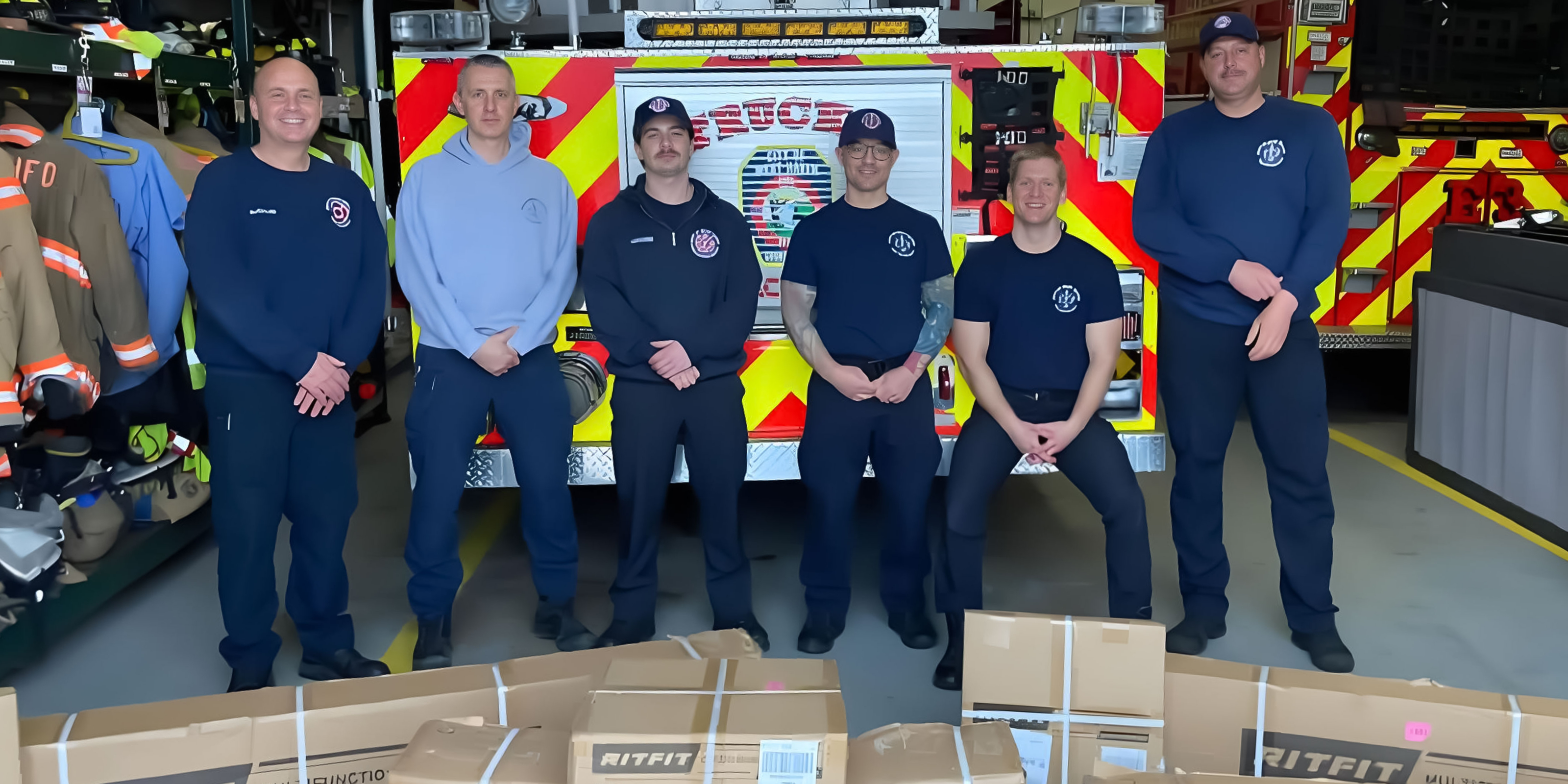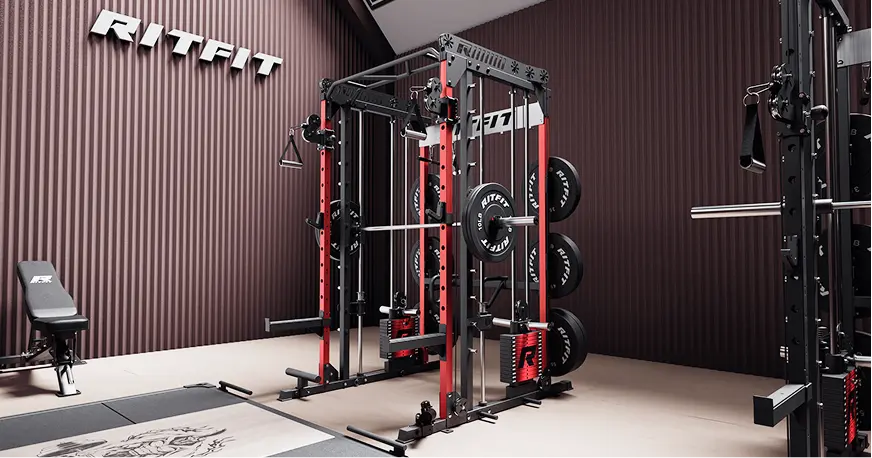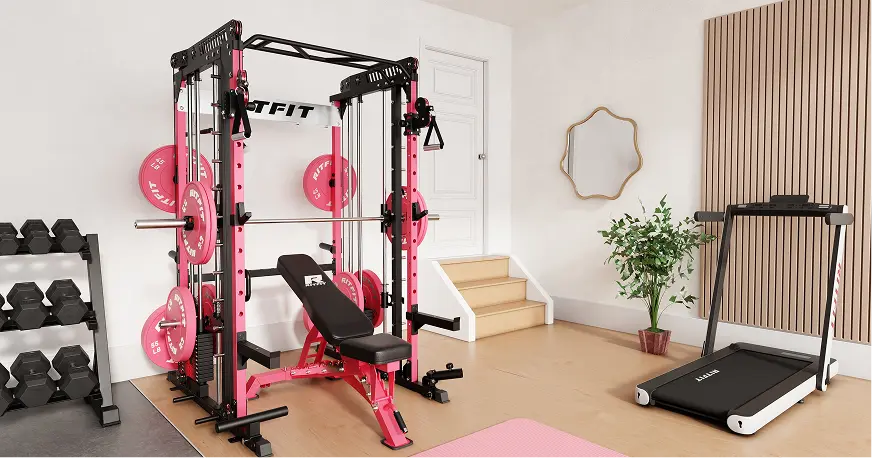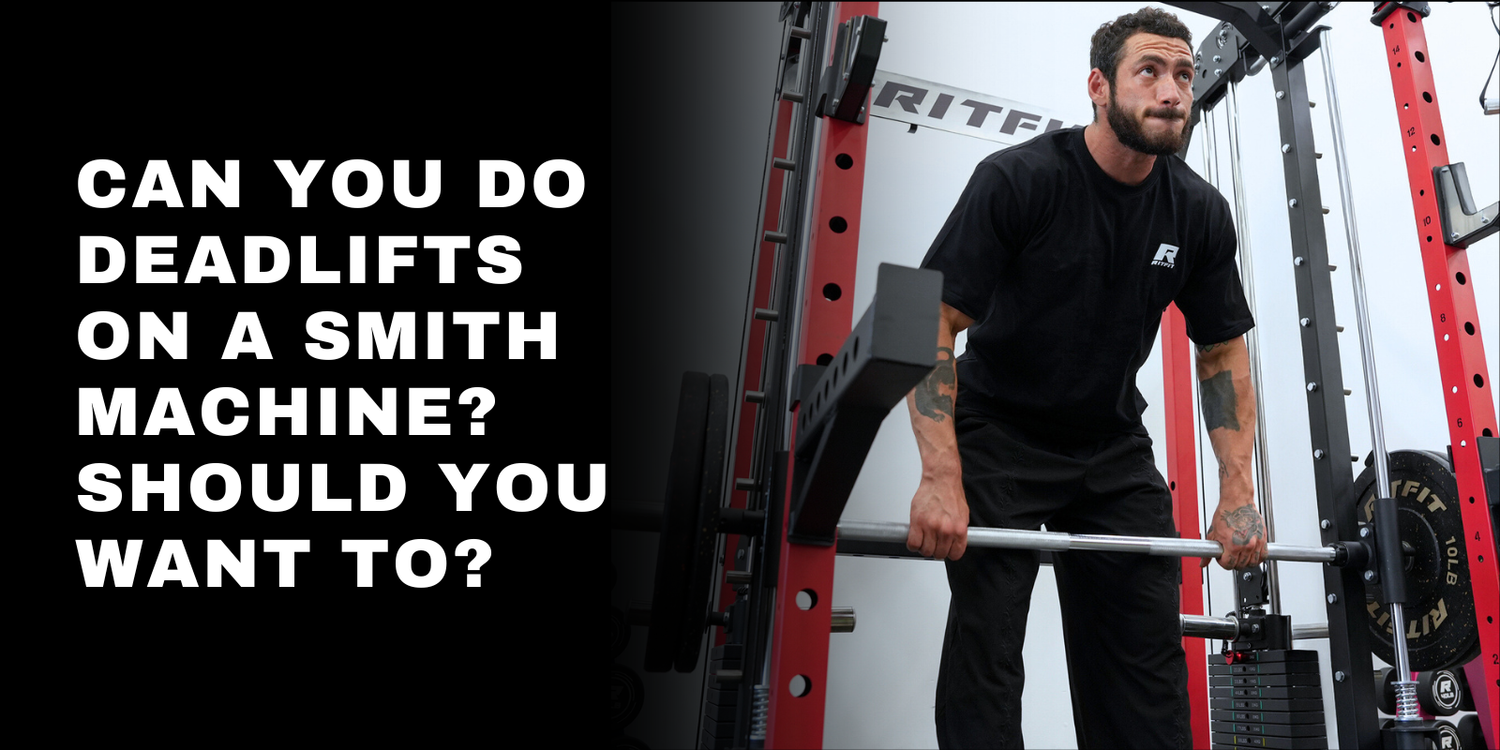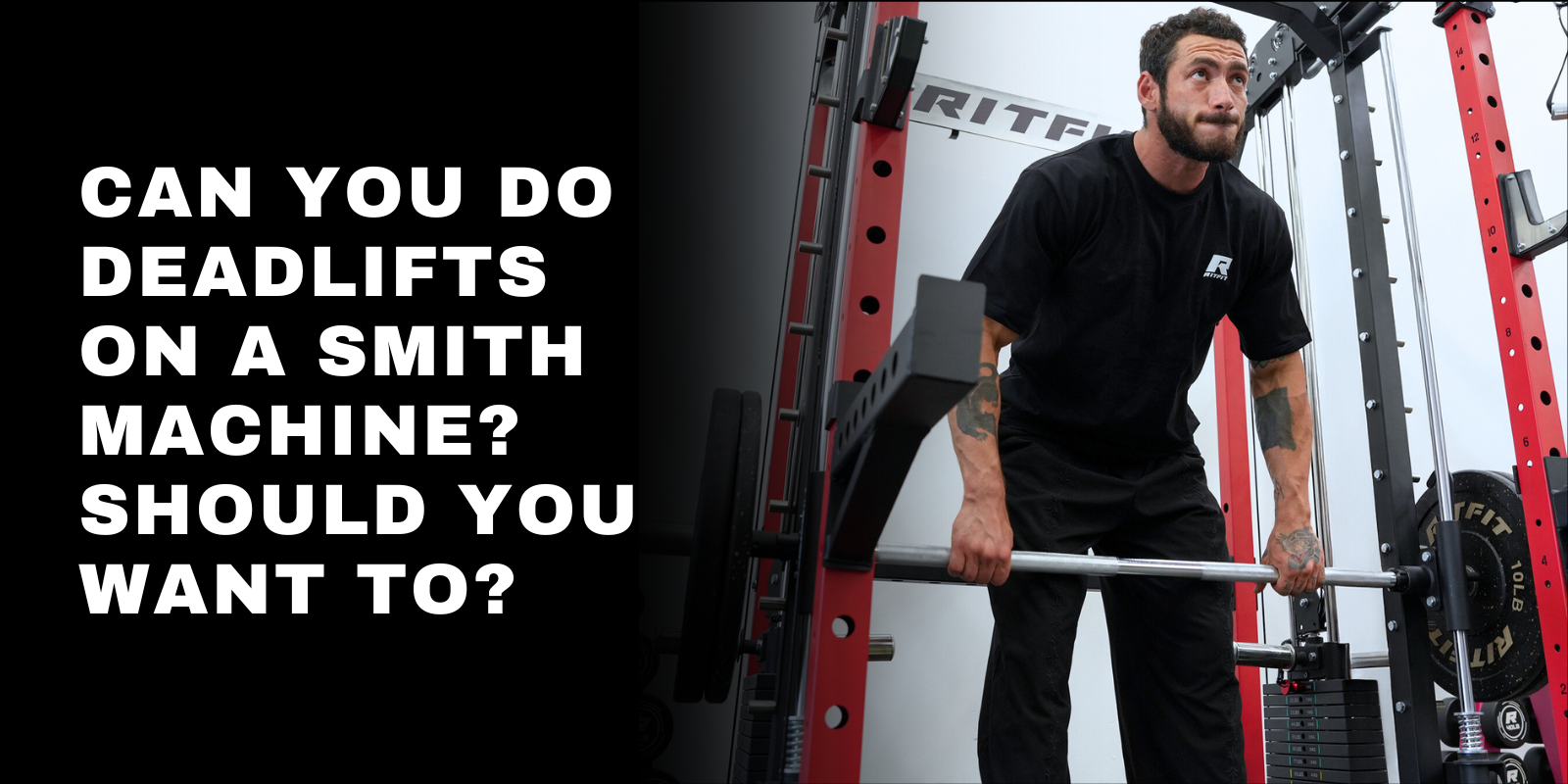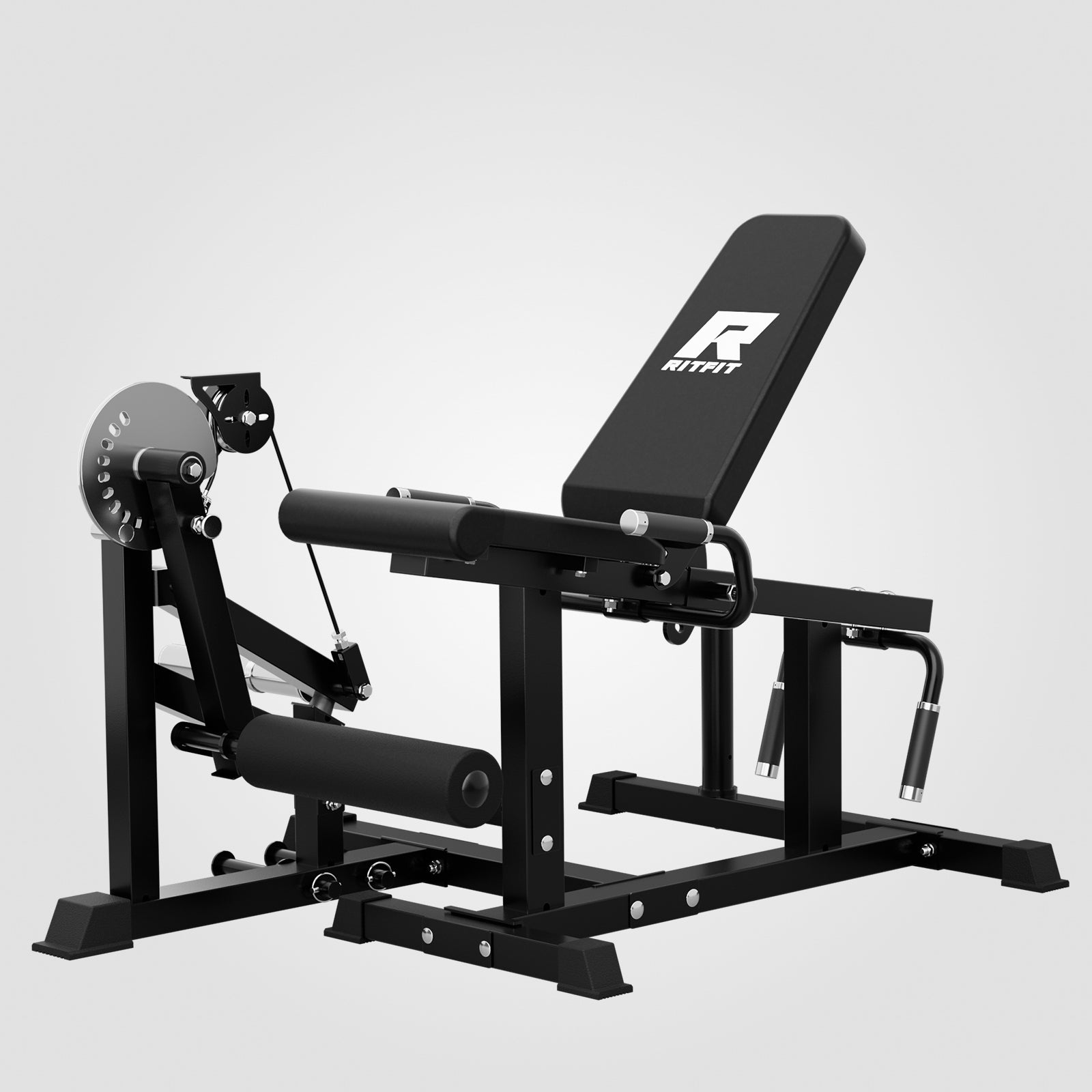"Can you do deadlifts on a Smith Machine?"
This is our question of the day, although we'd argue that "should you want to deadlift on a Smith Machine?" is probably a more pressing question.
The good news? The answer to both questions is "yes!"
You can knock out Smith Machine deadlifts to your heart's content. An added benefit is you'll be performing a lift that is quite different from its more popular, free weight counterpart.
We don't think you should ever stop conventional barbell deadlifting, but if you're looking for a legitimately unique complementary lift, the Smith Machine deadlift should be at top of your list.
Here's why:
What is the Smith Machine Deadlift?
You're probably thinking "a Smith Machine deadlift is just…like…a deadlift with a Smith Bar…"
…and…you're pretty much right.
On the surface, nothing about Smith Machine deadlifts scream "I'm different!" or "I'm difficult to access!"
And the reality is…this is pretty much the case: if you have a Smith Machine and a few bumper plates, congratulations…you can do knock out a set right now.
Not all things are as they seem, though. Deadlifting on a Smith Machine is a very different experience, starting with the muscle groups that are most involved in the action…
Smith Machine Deadlift Muscles Worked
Like all deadlift iterations, the Smith Machine deadlift heavily relies on posterior chain involvement to execute each rep. The lower back muscles (erector spine), glutes, and hamstrings account for roughly 70 percent of the overall effort (Tataryn et al., 2021).
The quads are the next largest contributors and receive more attention in the Smith Machine than they do with conventional barbell deadlifts. The more upright posture works the quads in a manner akin to barbell sumo deadlifts.
Unlike non-Smith Machine deadlift variations, core muscles receive far less attention. This is due to the Smith Bar's "built-in" stabilization which greatly reduces the strain on these muscles during the deadlift (Haugen et al., 2023). This also contributes to the reduced involvement from the traps and even the forearms (maintaining your grip is easier with the Smith Bar).
Ultimately, as a significant compound movement, the Smith Machine deadlift works a lot of the most powerful muscle groups.
Smith Machine Deadlift Benefits
The Smith Machine deadlift's extensive muscle activation is its most celebrated benefit. However, the exercise itself possesses several components that you will find to be both beneficial and convenient.
The Smith Bar's fixed bar path allows you to focus entirely on muscle contraction rather than on bar stabilization. This diminishes much of the attention on the core muscles, but it does make it easier to work with heavier loads on each set. Additionally, the fixed path eliminates bar rotation and deviation, reducing sudden stress on the joints.
Smith Machine deadlifts are also beneficial if you have certain types of mobility issues, or if you simply want to experiment with a more limited range of motion. It allows you to set a higher-than-normal starting point, removing one the most common "sticking points" from the lift (the initial pull from the floor).
If you prioritize hypertrophy training, minimal joint stress, and maximum flexibility, the Smith Bar deadlift may be your ideal variation.
How to Execute Smith Machine Deadlifts
Setting yourself up is arguably the most complicated aspect of Smith Machine deadlifts…and this process ain't that complicated.
- Set the Smith Bar close to the ground, and load your warm-up set weight. Now lower the bar further so that the plates are touching the ground.
- Approach the bar, positioning the bar slightly behind your midfoot with your shins close to vertical. Reach down and grasp the bar with either a double-overhand grip or a mixed grip.
- Tighten your glutes and core and maintain a straight back. Slowly stand, digging your heels into the ground as you lift the bar.
- Stand tall with a completely open hip to complete the lift. Pause for a second before slowly lowering the bar back to its starting position. Make sure to maintain tension and control through the eccentric phase of the movement.
- Once the plates contact the ground, briefly pause before starting the next rep. If you have finished your set, slightly lift the bar one last time and twist it forward to rack it in the lowest height position.
What's the Difference Between Conventional Barbell Deadlifts and Smith Machine Deadlifts?
Of all the Smith Machine compound movement variations, the Smith Machine deadlift may be the most different from its free weight counterpart.
Conventional barbell deadlifts require more control, balance, precision, and stabilizer muscles than Smith Machine deadlifts. They also require a different body position, particularly during the setup. The hips start higher and the back is angled more horizontally to start the lift while the body shifts slightly back as the bar travels higher.
Due to the Smith Bar's fixed position in the Smith Machine, lifters must set themselves up with a slightly lower hip position and a more upright torso while keeping the body closer to the bar throughout the lift (Hanen et al., 2025).
These different starting positions and movement patterns are significant enough to warrant incorporating both variations into your lifting regimen.
Smith Machine Deadlift Variations
Despite the Smith Machine deadlift being a distinctly different movement from the conventional deadlift, both movements share the same most common variations:
The Smith Machine Sumo Deadlift
Like its barbell Sumo deadlift counterpart, the Smith Machine Sumo deadlift involves a wide stance (feet outside of shoulder width) and a more upright starting position. This setup works the adductor muscles and quads more than other variations and also shortens the overall range of motion.
The Smith Machine Romanian Deadlift (RDL)
This variation more closely targets the glutes and hamstrings than other deadlift variations. Because each rep begins and ends with the bar slightly elevated off the ground (approximately mid-thigh height), the Smith Machine is ideal (since you can set it at this exact height).
Unlike other deadlift movements, your knees remain bent throughout the duration of each Smith Machine RDL repetition. The act of squeezing the glutes and extending the hips propels each rep.
Other Common Variations
The Smith Machine Stiff Leg deadlift, Smith Machine deficit deadlifts, and Smith Machine rack pulls are other effective and popular Smith Machine deadlift variations.
The Most Common Smith Machine Deadlift Mistake
The most common mistake when performing the Smith Machine deadlift is setting up for it in the same manner as a conventional barbell deadlift. The good news is, you are always aware of this mistake as soon as you begin each rep.
Setting up with the Smith Bar directly over your midfoot with your shins angled over the bar results in an almost instantaneous collision between the bar and your legs.
Depending on how much weight you have loaded and how fast your initial pull is, this likely won't be the most painful mistake…but it is one best avoided by practicing a proper setup.
You Can Deadlift on a Smith Machine and You Should Want to Deadlift in a Smith Machine!
Today, we've definitively answered the "can you do deadlifts on a Smith Machine?" question.
(In case you just skipped to the end, the answer is "yes"!)
However, as you're putting together your weekly training program, be mindful that Smith Machine deadlifts are a bit different than barbell deadlifts. There are many more differences between these movements than there are between Smith Machine bench presses, Smith Machine squats, Smith Machine rows and their respective free weight variations…
…but that ain't a bad thing,..in fact, we advise looking at this as a definite positive!
The Smith Machine's quad-focused muscle-building benefits alongside the unparalleled core-building capabilities of barbell deadlifts? Brutal…but you'll be a better person for doing it!
References
- Hanen, N. C., et al. (2025). Biomechanical analysis of conventional and sumo deadlift. Frontiers in Bioengineering and Biotechnology, 13, 1597209 https://doi.org/10.3389/fbioe.2025.1597209.
- Haugen, M. E., Larsen, S., van den Tillaar, R., & Bjørnsen, T. (2023). Effect of free-weight vs. machine-based strength training on maximal strength, hypertrophy and jump performance – a systematic review and meta-analysis. BMC Sports Science, Medicine and Rehabilitation, 15(103) https://doi.org/10.1186/s13102-023-00713-4.
- Tataryn, N., et al. (2021). Posterior-chain resistance training compared to general resistance training: A systematic review. International Journal of Environmental Research and Public Health, 18(10), 5234 https://doi.org/10.3390/ijerph18105234.


